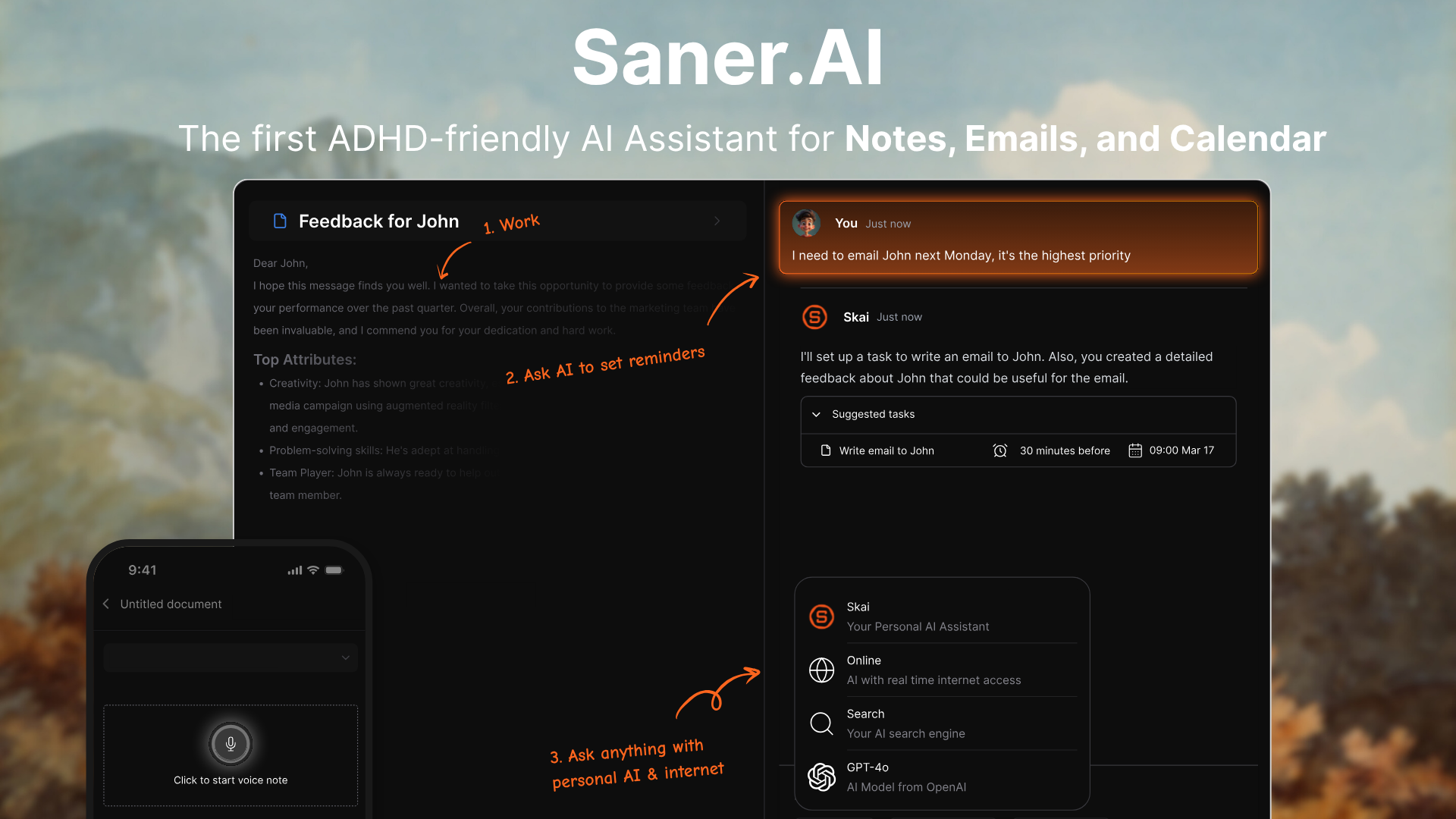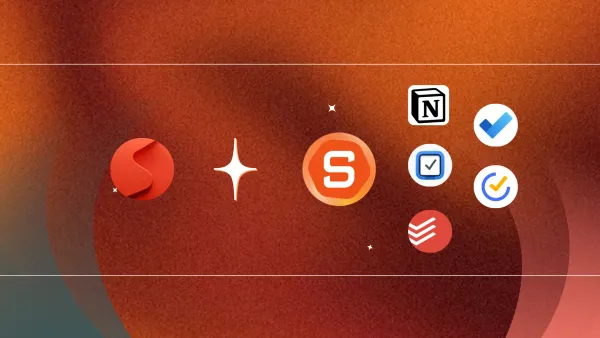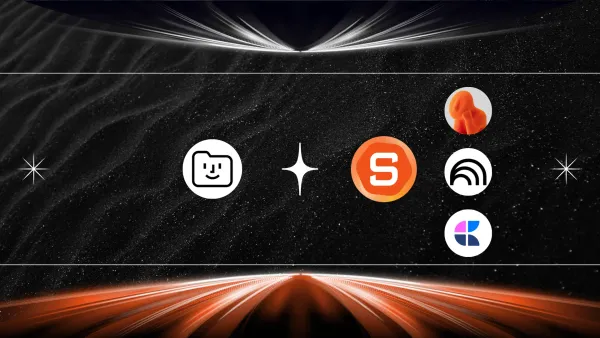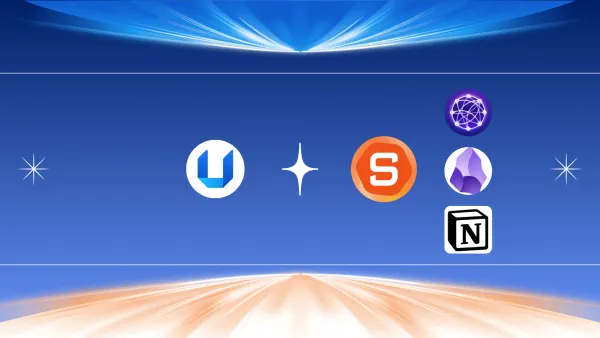6 Effective Methods to Reduce ADHD Procrastination [2025]

Wasted so much Time? 6 Methods to Reduce ADHD Procrastination
“I’ll do it in five minutes.”
“Tonight, for sure.”
“Okay… definitely tomorrow.”
Sound familiar?
If you’ve ever caught yourself making these promises - again and again - you’re not alone. Procrastination is something everyone struggles with. But for people with ADHD, it’s often a daily battle. The plan might be there, the intention clear, but the brain says: not yet.
Tasks get delayed for hours, days, or sometimes even weeks. And before you know it, you’re overwhelmed, anxious, and asking yourself: “Where did the time go?”
In this guide, we’ll unpack
- what ADHD procrastination really is,
- why it happens,
- most importantly - how to break the cycle.
What is Procrastination?

Procrastination is a common human habit where we delay starting or completing tasks that need to be done. It's like knowing you should do something now, but deciding to put it off until later.
Interestingly, chronic procrastination doesn't pick favorites - it affects people regardless of their gender, race, or age. Everyone can find themselves putting things off from time to time!
Why Do People With ADHD Struggle So Much With Procrastination?
Here’s why ADHD procrastination hits harder than “normal” procrastination:

1. Time Blindness
People with ADHD often struggle to feel time. Five minutes, one hour, or three days might feel the same until the last possible moment, when the panic sets in.
2. Task Paralysis,
Big or boring tasks can feel like a mountain. If the reward isn’t immediate, the brain loses interest fast. Even starting can feel impossible.
3. Low Dopamine
ADHD brains have lower levels of dopamine, the “motivation” neurotransmitter. Without a dopamine boost, the brain resists starting anything that feels difficult or unrewarding.
4. Mental Fatigue
Sustained focus is draining. If a task requires a lot of effort, even thinking about it can trigger avoidance.
5. Perfectionism + Shame Cycle
Many ADHDers hold themselves to impossibly high standards. When they miss deadlines or delay work, they feel guilty… which makes it even harder to restart.
Common Procrastination Triggers (ADHD or Not)
Even neurotypical folks procrastinate. But the reasons overlap with ADHD patterns:
- Feeling lazy (or just burned out)
- Low energy or sleep debt
- Boring or emotionally difficult tasks
- Thriving on last-minute pressure
- Indecision or fear of choosing wrong
The Link Between ADHD and Procrastination (Backed by Research)
A 2014 study published in Frontiers in Psychology found that inattention was closely linked to procrastination in adults with ADHD.
Another study from BMC Psychiatry highlighted that executive dysfunction - difficulty planning, prioritizing, and completing tasks - is a core factor behind ADHD procrastination.
These aren’t character flaws. They’re brain-based challenges.
Which is why beating ADHD procrastination requires more than willpower. It needs specific strategies that work with your brain, not against it.
6 Effective Ways to Beat ADHD Procrastination
1. Reframe Your Thoughts With the ABCDE Model 🧩
The ABCDE cognitive model, created by psychologist Albert Ellis, helps break the loop by challenging your automatic thoughts and replacing them with more helpful beliefs.
What does it mean :
- A – Activating event: Something triggers your avoidance (e.g., a deadline)
- B – Belief: You tell yourself, “I’ll wait until I’m in the right mood.”
- C – Consequence: You delay until the last minute and feel overwhelmed
- D – Dispute: Challenge that belief — “What if I just start with 5 minutes?”
- E – Effect: You reduce anxiety, take action earlier, and feel more in control
ADHD-Friendly Example:
- A: You have a report due Friday.
- B: “I’ll feel more focused tomorrow.”
- C: You avoid it until Thursday night, and panic.
- D: “What if I start with just the outline today?”
- E: You start, realize it’s not as bad as you feared, and get momentum.
ADHD Reminder Tips:
- Set a phone reminder labeled “ABCDE that thought!”
- Stick the ABCDE steps on your desk or fridge
- Use apps like Saner.AI to reflect on recurring procrastination patterns automatically
👉 Here’s a deeper guide on how ABCDE works
2. Take the Smallest Possible First Step 🪜

ADHD procrastination often stems from task initiation problems, not lack of willpower.
Big tasks = brain freeze. Your nervous system sees “research paper” and instantly flips to “let’s reorganize the sock drawer.”
What works instead:
Break it down so small your brain can't reject it.
Examples:
- “Write article” → “Open Google Doc”
- “Clean house” → “Pick up 1 pair of shoes”
- “Reply to email” → “Read email header only”
Bonus tip: If you’re stuck:
- Ask a friend or coworker for help identifying the very first action
- Or ask AI Todo List like Saner.AI to break the task down for you in 5 seconds
📖 Related: ADHD Task Initiation: How to Start Without Overthinking
3. Change the Habit Loop 🌀
Procrastination in ADHD isn’t just a decision - it’s often a default habit.
The cycle: Trigger → Avoid → Temporary Relief → Guilt → More Avoidance
You can break the loop with environmental and habit strategies:
🛠️ ADHD-Friendly Habit Shifts:
- Minimize Distractions: Turn off phone notifications, use a physical timer, or try a “distraction dump” notepad
- Practice Self-Forgiveness: Shame fuels avoidance. ADHD thrives on momentum, not self-blame
- Mindfulness Reset: A 3-minute breathing exercise helps shift from reactive mode to intentional mode
📚 Deep dive: Atomic Habits shows how micro-shifts lead to macro change - even for chaotic brains.
4. Reward Yourself Immediately 🎉

Your ADHD brain responds better to dopamine than deadlines.
Most productivity systems fail ADHDers because they focus on willpower instead of wiring. That’s where self-reward comes in.
💡 How to Do It Right:
- Set small goals → “Write intro paragraph”
- Choose meaningful rewards → Coffee walk, 15 mins of YouTube, mini dance break
- Deliver immediately → No waiting until the end of the day
- Avoid addictive rewards → Don’t let TikTok swallow your brain
📌 Pro Tip: Stack rewards with routine. E.g., “After I do X, I get Y.” This turns action into habit.
5. Build Discipline the ADHD Way 🧭
Discipline isn’t about trying harder - it’s about designing smarter.
For ADHDers, self-discipline needs to be externalized. Your brain won’t always cooperate, so structure becomes your ally.
🔧 ADHD-Proof Discipline Tools:
- Cognitive Behavioral Therapy (CBT) is the most effective approach, promoting changes in perception and procrastinatory behavior through cognitive restructuring and the development of coping strategies
- Use structure: Routines reduce executive load. Try starting each day with the same “launch pad” routine.
- Time-block your tasks: Use calendar tools or time-boxing methods to pre-decide when you’ll work
- Use AI to organize your day: Apps like Saner.AI can build your schedule for you based on task priority and mental energy
- Set visual cues: Sticky notes, whiteboards, or even physical tokens to keep you on task
👉 Related: ADHD-Friendly Environment Guide
6. Go All-In (When You’re Ready) 💥

Sometimes the best way to crush ADHD procrastination is to burn the Plan B.
This isn’t for every situation, but occasionally, removing your safety net forces hyperfocus.
🔥 Real-World Example:
- A founder quits their job to launch a startup.
- With no fallback, the pressure triggers intense focus and urgency.
- They get more done in 2 weeks than the past 6 months.
⚠️ ADHD Disclaimer:
- This works only if you’re ready and supported
- For most ADHDers, gradual accountability systems (coaching, body doubling, public commitments) are safer and more sustainable
Still, the "No Plan B" mindset can be simulated:
- Set deadlines with consequences
- Make public declarations of goals
Final Thoughts: You’re Not Lazy - Your Brain Just Works Differently
Beating ADHD procrastination isn’t about fixing yourself. It’s about understanding how your brain works and then using the right tools, strategies, and support to work with it, not against it.
Whether it’s breaking down tasks into micro-steps, rewiring negative thoughts with the ABCDE model, or designing an environment that supports focus, you’re building a system that fits your unique brain.
Even one small win today (like reading this guide!) is proof that change is possible.
The next step? Pick one method above, try it out, and reward yourself for showing up.
You’ve got this - one step, one dopamine boost, and one decision at a time.
FAQ on ADHD Procrastination
1. What is ADHD Procrastination?
ADHD procrastination is more than just putting things off - it’s a neurological struggle with task initiation, , time blindness, and emotional overwhelm. People with ADHD often know what they need to do but can’t get themselves to start, especially when the task feels boring, uncertain, or too big.
It’s not laziness. It’s a brain wired for stimulation, constantly pulled by distractions, emotions, or the need for instant reward.
2. What does ADHD procrastination look like in real life?
Here’s how it typically shows up:
- You keep rewriting your to-do list instead of doing the work
- You scroll social media or clean your room right before a deadline
- You wait for the “right mood” or a magical burst of motivation
- You start a task, hit one tiny obstacle, and quit
And then feel guilty for hours or even days.
3. Why is procrastination worse with ADHD?
Because ADHD affects executive function, the mental system that handles planning, prioritization, and self-regulation. This means:
- It’s harder to see time clearly (time blindness)
- Starting feels like pushing through a brick wall (task paralysis, )
- Small tasks don’t feel urgent until there’s a crisis (interest-based nervous system)
- Emotional overwhelm blocks action (emotional dysregulation)
The result? You know the stakes, but your brain won’t cooperate.
4. How can I beat ADHD procrastination?
There’s no one-size-fits-all fix, but these science-backed strategies help:
- Externalize tasks: Use tools that get your ideas out of your head and into a visible system
- Chunk big tasks: Break things into the next tiny step
- Time blocking: Schedule work like an appointment so your brain sees it as real
- Accountability: Tell someone your plan—it boosts follow-through
- Use AI assistants: Tools like Saner.AI help by turning rants into tasks, setting reminders, and breaking projects down automatically
Even better? You don’t have to rely on willpower.
5. Can AI help with ADHD procrastination?
Absolutely. AI tools like Saner.AI are especially helpful because they reduce friction.
Here’s how they help:
- Task from text: Just rant, and the AI creates a to-do list with reminders
- Smart planning: It auto-prioritizes your day based on urgency and context
- Calendar sync: Suggests the best time for each task
- Note linking: Brings up past ideas or files when you need them
It’s like having an executive function coach in your pocket.
6. Is ADHD procrastination the same as laziness?
No. This is one of the biggest myths.
Laziness is a lack of desire to do something.
Procrastination - especially with ADHD - is a disconnect between intent and action. You want to do the task. You just can’t get started, stay on track, or manage the overwhelm. That’s a brain difference, not a character flaw.
7. What tools or apps help with ADHD procrastination?
Here are a few ADHD-friendly tools designed to reduce overwhelm and increase action:
- Saner.AI – Great for task extraction, calendar sync, and organizing notes automatically
- Focusmate – Real-time virtual body doubling
- Structured – Visual daily planner for ADHD brains
- Pomofocus – Simple Pomodoro timer to break the freeze
Choose the one that feels easiest to start with. Momentum matters more than perfection.
8. What’s the best way to plan your day if you procrastinate?
Try this ADHD-friendly structure:
- 3-task max: Pick only 3 priorities to focus on
- Anchor task: Choose 1 small, doable win to start the day
- Use AI: Let tools like Saner.AI create a day plan based on what’s urgent and important
- Time block breaks: Schedule pauses so your brain doesn’t seek them by default
- End-of-day wrap: Review what worked and reset gently for tomorrow
Planning shouldn’t feel like another chore. Done right, it’s a lifeline.
9. Why do I procrastinate even on things I care about?
Because emotion hijacks logic. ADHD brains often associate big, meaningful tasks with pressure, fear of failure, or perfectionism. That emotional weight causes your brain to avoid the task, even if it matters to you.
The trick is to reduce friction and emotional load:
- Make it smaller
- Make it visible
- Make it safe to start
- Let tools like Saner.AI help automate the hard parts
Get over your Procrastination with an AI Assistant





